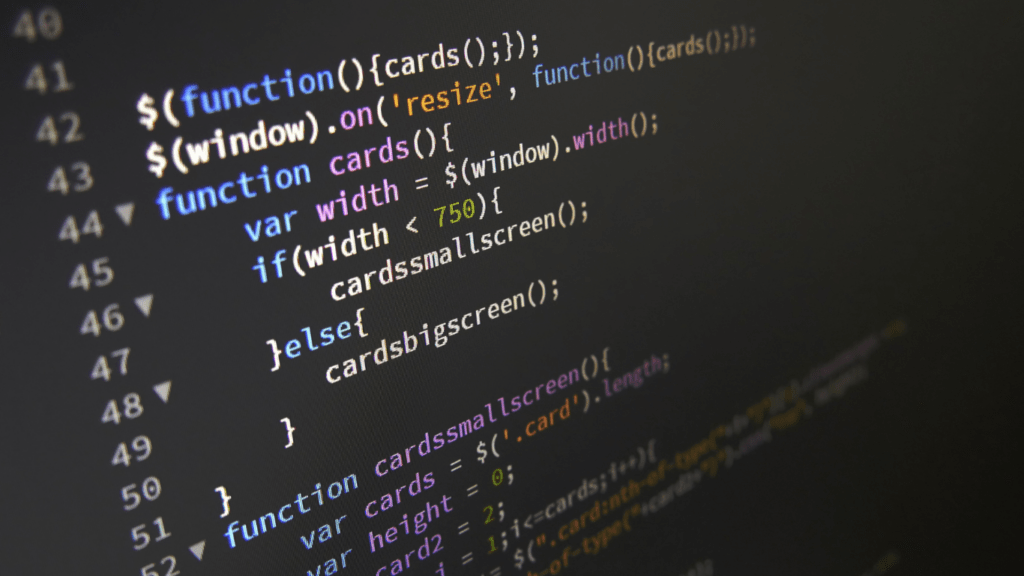As a seasoned tech enthusiast, I’m always on the lookout for the next big trends in the programming world. In 2024, staying ahead in the tech industry means mastering the right programming languages. The landscape is ever-evolving, and keeping up with the latest languages can give you a competitive edge in the job market.
In this article, I’ll delve into the top programming languages that are set to dominate the tech scene in 2024. From established giants to up-and-coming contenders, each language brings its unique strengths and applications. Whether you’re a seasoned developer looking to expand your skill set or a newcomer eager to break into the field, knowing which languages to focus on can be the key to success in the fast-paced world of programming.
Current Trends in Programming Languages
Discussing the current trends in programming languages is vital for professionals aiming to excel in the tech industry. Staying abreast of the latest developments helps in making informed decisions on which languages to prioritize. As someone deeply invested in the tech landscape, tracking these trends is crucial for remaining competitive and relevant in the field.
Observing the market dynamics reveals the rising popularity of languages like Python, JavaScript, and Java. Python’s versatility in areas such as data science and machine learning makes it a top choice for many developers. Meanwhile, JavaScript’s dominance in web development remains unchallenged, with frameworks like React and Angular continuing to drive its usage. Java’s robustness and widespread adoption ensure its continued relevance in enterprise applications.
The emergence of languages such as Rust and Kotlin also signals a shift towards more modern and efficient programming paradigms. Rust’s focus on safety and performance makes it attractive for systems programming, particularly in domains where reliability is paramount. On the other hand, Kotlin’s seamless interoperability with Java and concise syntax position it as a preferred language for Android app development.
Furthermore, the growing interest in functional programming languages like Scala and Elixir indicates a recognition of the benefits they offer in terms of scalability and maintainability. Scala’s compatibility with Java and strong support for concurrency make it a compelling choice for building large-scale applications. Elixir, with its emphasis on fault-tolerance and distributed computing, is gaining traction in the development of real-time systems.
By keeping abreast of these trends and understanding the unique strengths of each language, I position myself to make informed decisions about which programming languages to learn and master in 2024. This foresight enables me to adapt to the evolving demands of the tech industry and stay ahead of the curve.
Popular Programming Languages in 2024
In 2024, staying abreast of the latest programming languages is crucial to thriving in the competitive tech landscape. Mastering the most relevant programming languages is key to gaining a competitive edge in the job market. Let’s delve into the popular programming languages expected to lead the tech industry.
Python
Python continues to be a dominant force in the programming realm. Its versatility and ease of use make it a favorite for various applications, including web development, data science, artificial intelligence, and automation. Professionals with Python skills are highly sought after in diverse tech roles.
JavaScript
JavaScript remains a cornerstone of web development, powering interactive and dynamic web pages. As the language of the web, JavaScript’s demand is unwavering, with frameworks like React and Angular solidifying its relevance. Proficiency in JavaScript opens doors to a multitude of frontend and backend opportunities.
Java
Java, known for its robustness and platform independence, maintains its stronghold in enterprise solutions. With a vast ecosystem and compatibility across different devices, Java is a top choice for building scalable applications. Mastery of Java is invaluable for developers aiming to work on large-scale projects.
Upcoming Programming Languages to Watch
Rust
Rust, known for its focus on performance and safety, is gaining traction in various domains like systems programming, embedded development, and web services. It’s renowned for preventing common programming errors at compile time, making it a robust choice for building reliable and efficient software solutions. Companies like Mozilla, Dropbox, and Amazon have adopted Rust for its ability to deliver high-performance applications while ensuring code safety. With its growing community support and emphasis on memory safety without sacrificing performance, Rust is definitely a language to keep an eye on in 2024.
Factors Influencing the Choice of Programming Languages
Exploring the factors that influence the choice of programming languages is crucial for professionals looking to excel in the dynamic tech industry of 2024. As I delve into the key considerations, it becomes evident that various elements play a significant role in determining which languages are essential to learn. Below are the essential factors shaping the decision-making process:
- Job Market Demand: The demand for specific programming languages in the job market significantly impacts an individual’s choice. By analyzing job postings and industry trends, one can identify which languages are in high demand across various sectors. Mastery of languages sought after by top tech companies can provide a competitive edge in securing lucrative opportunities.
- Versatility and Applications: Consider the versatility and applications of a programming language when making a decision. Languages like Python, with applications in web development, data science, AI, and automation, offer a wide range of opportunities. Evaluating the breadth of applications a language offers can guide professionals in selecting languages that align with their career goals.
- Performance and Efficiency: The performance and efficiency of a programming language are critical factors influencing its adoption. Professionals often seek languages that offer optimal performance, enabling the development of efficient, high-performing applications. Languages like Rust, known for their performance and safety features, are gaining traction in areas requiring robust systems programming and web services.
- Community Support and Ecosystem: The presence of a strong community and ecosystem around a programming language can significantly impact its relevance and growth. Languages with active communities often have robust support systems, extensive libraries, and evolving frameworks that enhance the development experience. Engaging with a vibrant community can accelerate learning and enable professionals to stay updated with the latest industry trends.
- Innovation and Future Trends: Keeping abreast of emerging technologies, languages, and trends is vital for staying competitive in the ever-evolving tech landscape. Professionals should assess the innovation potential and future trajectory of programming languages to make informed decisions about learning new languages. Exploring emerging languages can open doors to novel opportunities and positions professionals at the forefront of technological advancements.
Considering these influential factors can empower individuals to make informed decisions when choosing which programming languages to learn, ultimately enhancing their skill set and market competitiveness in the tech industry of 2024.


 Holly Keenstier is a crucial helper at The Code Crafters Hub, where her contributions significantly enhance the platform's capabilities. Keenstier's background in software development and her meticulous approach to project tasks have made her an integral part of the team. Her role involves various responsibilities, from aiding in technical troubleshooting to supporting content development, all of which are essential to maintaining the hub’s high-quality standards.
Keenstier’s dedication to The Code Crafters Hub is evident in her commitment to delivering relevant and insightful content. Her efforts help ensure that the platform remains a leading resource for the latest advancements in web development, game development, IoT, and cybersecurity. Based in Warren, MI, Keenstier’s work is instrumental in keeping the hub’s offerings dynamic and up-to-date.
Holly Keenstier is a crucial helper at The Code Crafters Hub, where her contributions significantly enhance the platform's capabilities. Keenstier's background in software development and her meticulous approach to project tasks have made her an integral part of the team. Her role involves various responsibilities, from aiding in technical troubleshooting to supporting content development, all of which are essential to maintaining the hub’s high-quality standards.
Keenstier’s dedication to The Code Crafters Hub is evident in her commitment to delivering relevant and insightful content. Her efforts help ensure that the platform remains a leading resource for the latest advancements in web development, game development, IoT, and cybersecurity. Based in Warren, MI, Keenstier’s work is instrumental in keeping the hub’s offerings dynamic and up-to-date.
